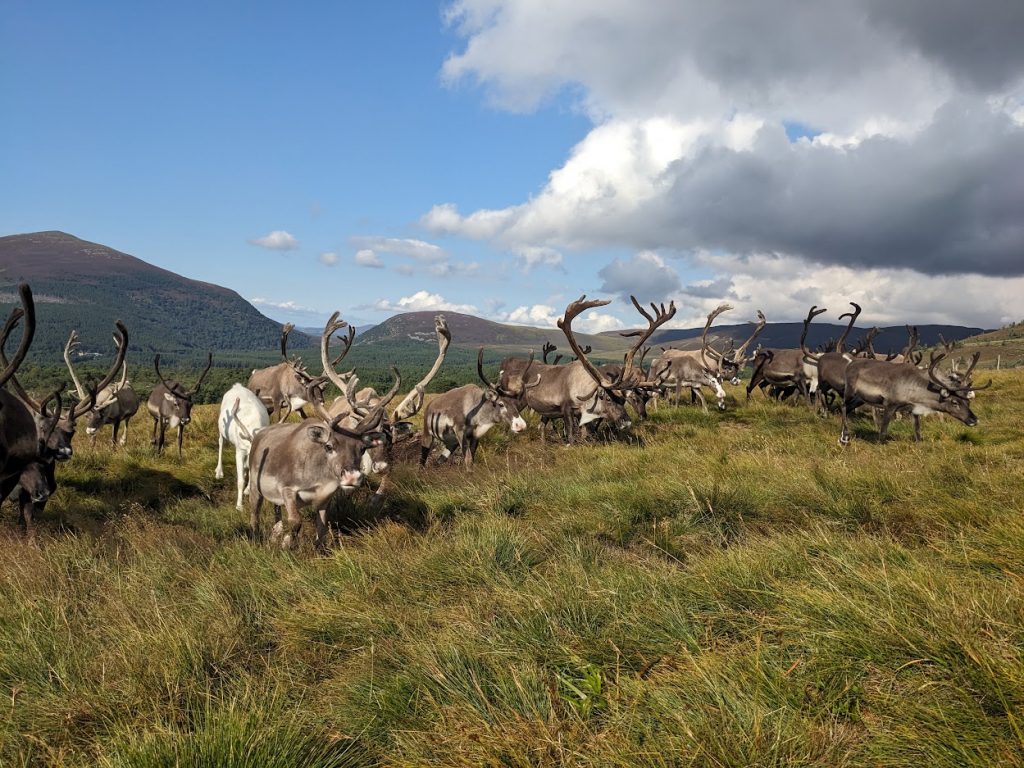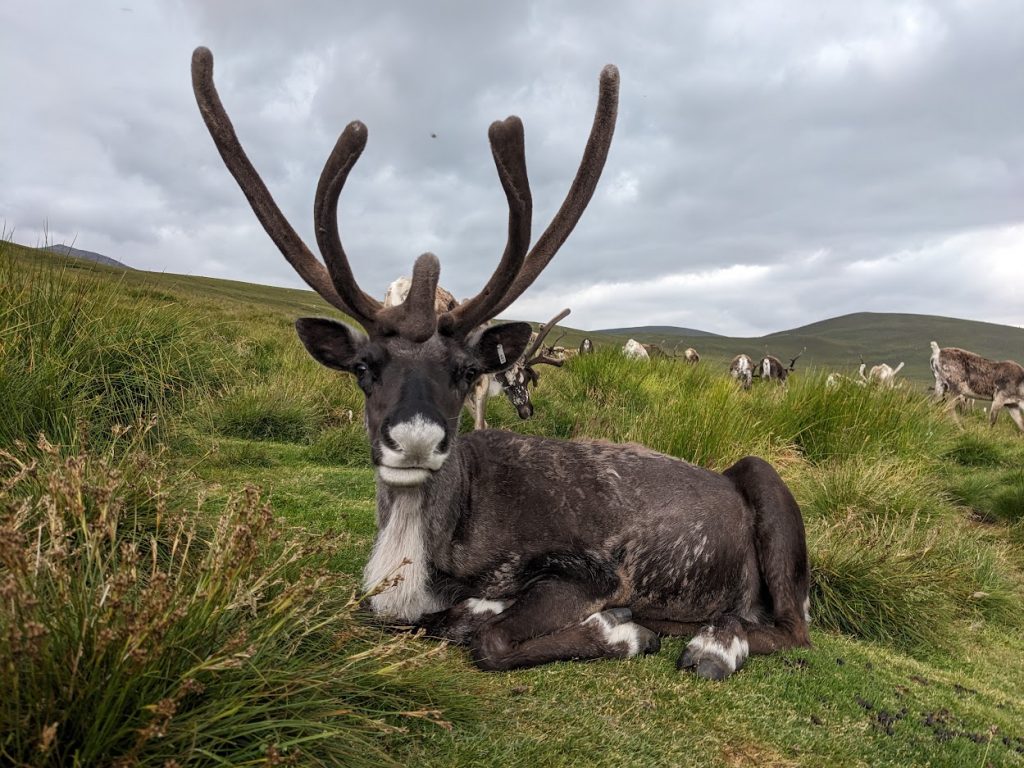
Reindeer identification is definitely one of the most challenging aspects of the work here at the Reindeer Centre. Of course there are a few individual reindeer that are very distinctive and easy to spot like Sherlock with those enormous antlers and Dr Suess with his with white nose. I’m also pretty confident telling apart the two white yearling males (99 and Mr Whippy) as long as they’re not too far away!


I’ve been taking as many opportunities as I can to try to get to know who’s who for the less obvious members of the herd. During the summer months while I’m here, the hill enclosure is home to a lovely smaller herd made up of some of the bulls. It’s a good time to try to learn a few reindeer while they’re part of a smaller group and I can see them most days.
The ear tags on the reindeer are colour coded depending on the year they are born, for example last years calves all have red ear tags (I was lucky enough to be volunteering the day they were tagged!). As a rule, I tend to look for any distinguishing features first like coat colour, markings, antler shape and size, and body size. After that, I’ll try to spot what colour the ear tag is. Some of the older reindeer are easier because there are fewer to choose from with that year’s colour ear tag.

As well as the more obvious physical features, its been really helpful to speak to the other herders to get hints and tips on how they remember who’s who. For example, Sheena pointed out that Poirot’s antlers come out straight from his forehead like two fingers or the number “11” and his number is “211”. Isla told me how she remembers Arta’s name because the pattern on his nose looks like artwork and Mollie told me that Cicero has the biggest of the silvery coloured antlers.

This week I learned that Merida, Dr. Suess’ mum, also has a lovely white face and I was able to spot my personal favourite, Beanie, thanks to her lovely speckly nose and the fact that she was with a group of two cows with their calves.

However, often, just when I get the hang of this ID game, things start to change. The boys summer coats don’t really last more that a few weeks it seems so no sooner was I was feeling very confident identifying Lupin and Kernel with their beautiful dark summer coats they’re both already growing their winter coats! We’re also bringing some of the girls into the enclosure which is adding ever more complexity to the task. My ID skills are definitely a work in progress and I’m loving taking every opportunity to watch the herd and learn who everybody is.



Fran





